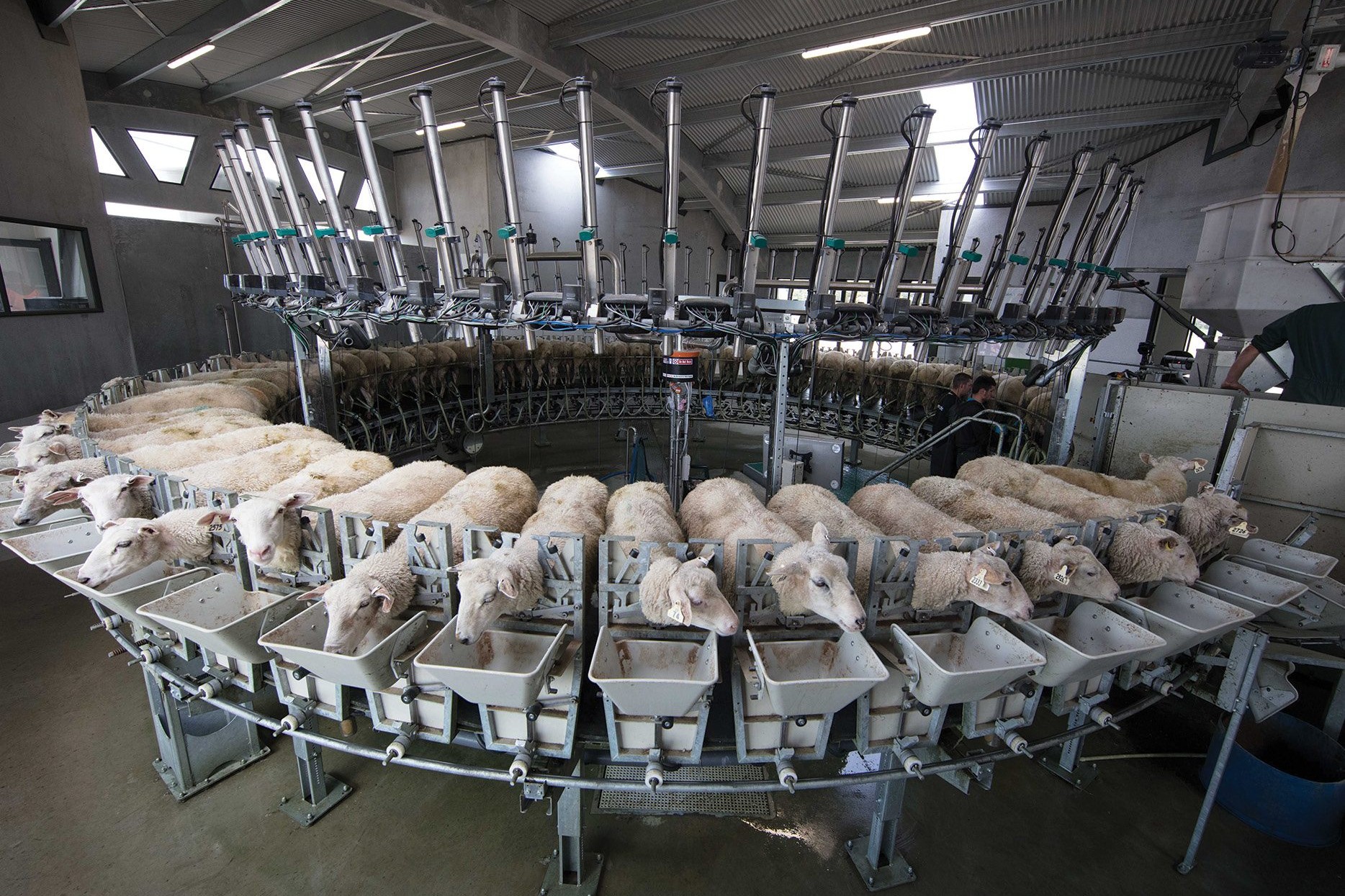Sheep are unique among farmed ruminants, potentially having meat, wool and milk to their credit. All three products have varying profits with dairy milk topping the list by some margin.
Sheep dairying, though, needs a milking setup, specialised genetics, plentiful pasture and secure milk supply outlets.
The ‘sheep of the future’ concept outlined here covers limited niche opportunities in the growing sheep milking industry, with synergistic opportunities on the back of mainstream dual-purpose meat and wool production.
Dairy sheep. Estimated numbers of dairy sheep in New Zealand are in the vicinity 25,000 with most suppliers linked to larger corporates like Spring Sheep and Maui Milk. Flock sizes vary from smaller boutique operations with 500-800 milking ewes to larger commercial units of 1000 or more ewes.
A specialist sheep dairy farm will be restricted to easier-contour areas with good pasture growth and proximity to sheep milk collection points. There are similarities to cow dairying with good feeding of milking ewes a must. However, a plus for sheep is they are more environmentally friendly than cattle with lower soil nitrogen loadings and positive pasture fertilising impacts from efficiently spread faeces and urine.
Sheep milking genetics. Local sheep dairy crossbreds based on northern hemisphere specialist breeds such as Lacaune, East Friesian and Awassi, crossed with local breeds like the Coopworth, yield about 250-350 litres per lactation. At ewe milk prices up to $3 per litre economics soar with gross annual incomes in the vicinity of $1000 per ewe.
Surprisingly when this author began NZ sheep dairy research in the mid-1970s the French Lacaune was reported as having similar annual milk yield to that from our Poll Dorsets of about 150 litres per lactation. After several decades of sophisticated genetic selection in France the Lacaune now pumps out over 600 litres per lactation!
Ready-made specialised sheep dairy genetics are available from the largest North Island sheep milking operatives including Spring Sheep’s Southern Cross and Maui Milk’s Zealandia. These genetics are in the form of leased rams or frozen semen for artificial insemination.
In the South Island there are Canterbury-based groups with specialised sheep dairy genetics and producer structures are developing. An innovative mobile milking plant concept designed by pioneer sheep milking enthusiast Ian MacDonald is gaining traction. Associated is a truck and trailer unit with refrigerated milk tanks.
Sheep milking flocks. Development of a new sheep milking flock should be in conjunction with one of the above industry organisations and associated consultants.
Options for inclusion of a local breed suited to your particular environment in the gene mix should be flexible. Remembering sheep already with good milking potential such as Coopworth or Poll Dorset should be favoured if upgrading with the specialist sheep milking genetics. Progeny growth rates and meat characteristics will also be a consideration.
Emphasis is not only on milk volume as characteristics such as milking speed are important as is milk composition. Udder shape of the best producers will have a cleavage meaning a strong centre ligament and with teats pointing more to the ground than sideways. Udder size does not generally have a good correlation with dairy milk production.
With inclusion of local breeds in milking ewes it’s unlikely expensive sheep barns will be needed. Pasture-fed sheep milk from our natural grazing systems is considered a promotional benefit for the wide range of sheep dairy products developed.
Lamb rearing. Additional income from lambs could be considered a bonus but usually means more work. One option is to remove lambs from milking ewes soon after birth and artificially rear them either onfarm or by contracted-out lamb rearing. Another is to leave the lambs on ewes, either fully or on a sharemilking basis, and early weaning them at 12-15kg liveweight, at about five weeks old, followed by continued milking of ewes.
However, leaving lambs on ewes initially can mean reduced dairy milk yield of 50-75 litres per ewe partially or fully suckling on average 1.5 lambs for the five weeks. Hence a large opportunity cost of more than $150 in dairy milk income results.
An effective and low-cost way of artificially rearing lambs from dairy ewes is use of cold ewe milk replacer. Lambs are offered cold ewe milk replacer in feeders in the paddock, preferably with high quality ryegrass-clover pastures. The objectives with chilled milk being to limit intake at each feed to avoid digestive upsets and at the same time promote early intake of pasture for rumen development.
This innovative lamb rearing system has worked well with lambs successfully weaned at four-five weeks of age at 12-15kg on average. After removal of milk-replacer or suckled ewe milk the lambs grew at a similar rate to those later weaned from ewes. Total amount of milk replacer used per lamb was 6-7kg, or about 35 litres of milk, at a cost on today’s prices of about $50 per lamb.
If there had been no colostrum to kick the lamb’s immune system into action an artificial form would need to be given at about $14 per lamb.
Labour. An important consideration for a sheep dairy enterprise is labour which is estimated at about one labour unit per 400 ewes milked. A means of reducing milk-shed labour is to milk once daily from mid-lactation onwards as early research has shown the reduction in yield decreases from 30% in early lactation to near zero in late lactation. In addition, taking advantage of simplified or contracted out lamb rearing is less labour intensive.
Animal health. Some of the observed problems to be wary of with dairy sheep are feet difficulties, susceptibility to facial eczema and undesirable udder structure. With such a high income enterprise animal health measures should be top priority. Genetic selection where possible both for disease resistance and against structural defects is imperative.
Shearing of dairy ewes is often considered another form of animal health and improved welfare as income from wool will not generally show a profit after shearing costs.
General information on sheep dairy production can be found at www.facebook.com/sheepmilknz/
Canterbury sheep milking industry update can be found at:
- agribusinessgroup.com/news/sheep-milking-update
- co.nz/become-a-supplier/dairy-sheep-genetics/ )
- com/zealandia-genetics)





